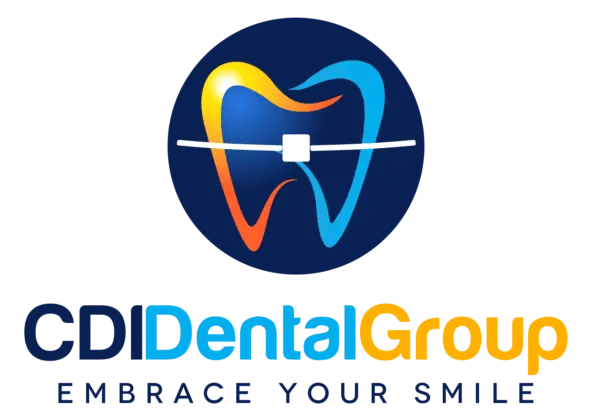Braces / Orthodontics
About Orthodontists
Orthodontists are qualified Dentists who have an additional two to three years of education and specialized training in tooth movement and the guidance of facial development. Orthodontists work as a team with your Dentist to maximize your smile and improve your dental health.
Reasons for Referral
You or your child may be referred by your Dentist to an Orthodontist if:
Your child has:
- Early or late loss of baby teeth
- A finger sucking or other oral habit
You or your child has:
- Difficulty in chewing or biting
- Mouth breathing
- Crowding, misplaced, protruding, or blocked-out teeth
- Jaws that shift, make sounds, protrude or retrude
- Speech difficulty
- Problems resulting from biting into a cheek or the palate (roof of the mouth)
- Teeth that meet in an abnormal way or don’t meet at all
- A facial imbalance or asymmetry
- Grinding or clenching of teeth
Appliances
An orthodontic appliance is prescribed based on a patient’s age and his or her teeth and jaw alignment needs. There is a wide range of available orthodontic appliances. Each appliance has several techniques for treatment use. While dental braces are the most universally known, only your Orthodontist can prescribe the appliance and restorative technique that is right for you.
Types of Braces
The most commonly known orthodontic treatment is braces: an orthodontic appliance used to straighten teeth and correct bad bites. Braces can be prescribed for teens, adults, and children who have permanent teeth. They may be used in conjunction with other orthodontic appliances prescribed to widen the palate or jaws or to shape the teeth and jaws. The average treatment time for braces is just over two years, but treatment time varies by the individual patient.
There are two major types of braces: fixed and removable. If you are a candidate for braces, your Orthodontist will recommend the type best suited for you.
Fixed
Fixed braces are worn 24/7. Only an Orthodontist can remove fixed braces.
Several types of fixed braces are available.
- Traditional braces (the most commonly needed orthodontic appliance)
- Conventional braces (the type that most people think of) require elastic or metal ties to hold the archwire in place.
- Self-ligating braces (the type our Orthodontists recommend most often) do not require elastic or metal ties. Self-ligating braces create proper tooth alignment faster, more comfortably, and with fewer adjustments (and office visits) than conventional braces.
- Ceramic braces are less noticeable than traditional braces because they tend to blend with the wearer’s natural tooth color. They are similar to conventional braces, but because they are made from porcelain, they are more expensive and susceptible to damage.
Removable
Removable braces (sometimes called aligners) are prescribed when teeth only need to be moved horizontally and the patient is highly motivated to follow a strict regimen. Removable braces are worn 24/7 except for time eating and drinking, or brushing and flossing. This means that patients must be diligent about replacing their removable braces several times each day. If removable braces are worn less than required, treatment time will be longer.
Patient Experience
After reviewing your dental x-rays and performing a thorough exam of your teeth, gums, supporting bone structure, and any pre-existing dental work, your Orthodontist will recommend a treatment plan and answer your questions. If your agreed-upon treatment plan is for traditional braces:
- You and your Orthodontist will decide upon conventional or self-ligating braces
- Each tooth that will receive the brace has its front surface prepared so it can receive a bracket
- Bonding and composite material are used to hold the small metal bracket to the tooth
- A special light is projected onto the bracketed teeth to harden the composite material.
- Metal bands are placed on your first molar and archwires are threaded through the brackets
- If you receive conventional braces, either elastic or metal ligatures will be added. If you receive self-ligating braces, no ligatures are used.
During the first week after being fitted with braces, or after having your braces adjusted by your Orthodontist, your teeth may hurt. This generally subsides within a week. Typically, discomfort can be managed with the use of an over-the-counter analgesic used according to the package label.
After the recommended treatment period, your Orthodontist will remove the braces and give you a retainer to wear for a prescribed time. The retainer helps keep your teeth from moving back to their original position.
Call us at 562 317 5258 or Schedule an online appointment with Dentist Long Beach, CA.
Location
2690 Pacific Ave #250, Long Beach, CA 90806
Phone ( Main ): (562) 317-5258
Fax: (562) 317-5260
Office Hours
Monday: Closed
Tuesday: 8:30 am - 5:30 pm
Wednesday: 8:30 am - 5:30 pm
Thursday: 8:30 am - 5:30 pm
Friday: Closed
Saturday: 8:00 am - 5:00 pm
Sunday: Closed
Get in Touch
Email: contactus@cdidentalgroup.com
Phone ( Main ): (562) 317-5258
(562) 317-5259
(562) 330-0557
Fax: (562) 317-5260
Request An AppointmentCDI Dental Group
2690 Pacific Ave #250
Long Beach, CA 90806
Phone: (562) 317-5258
